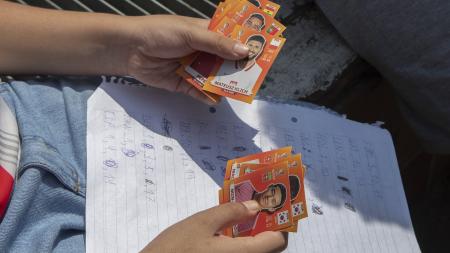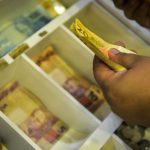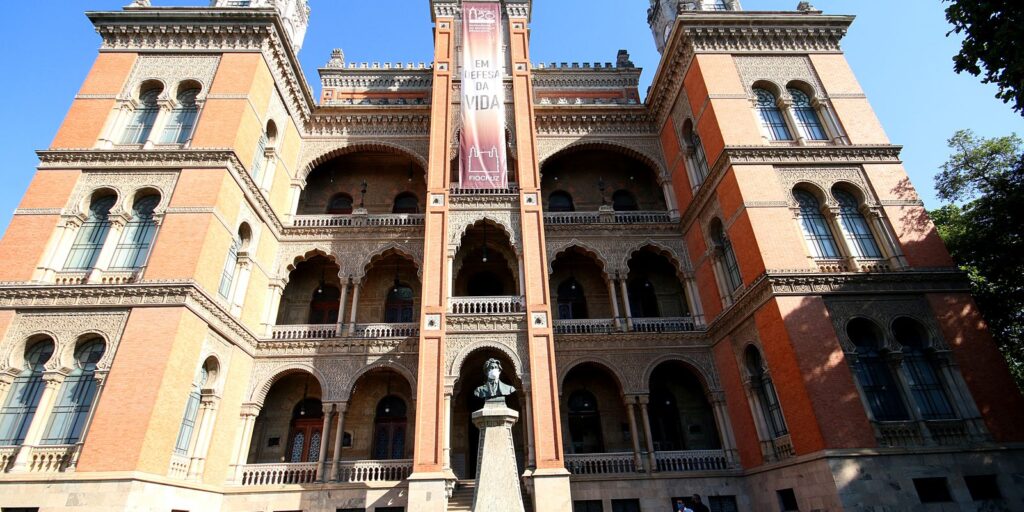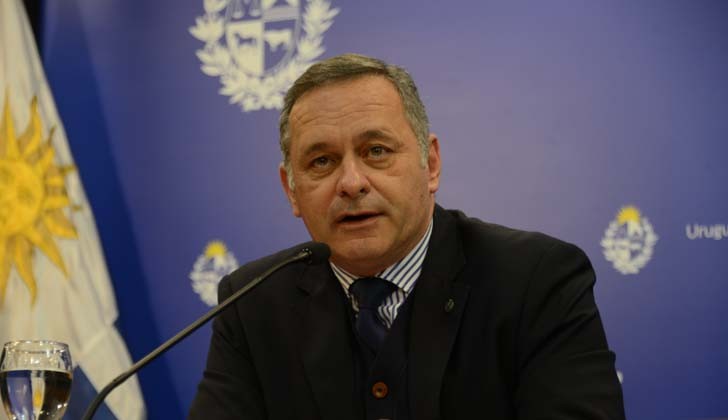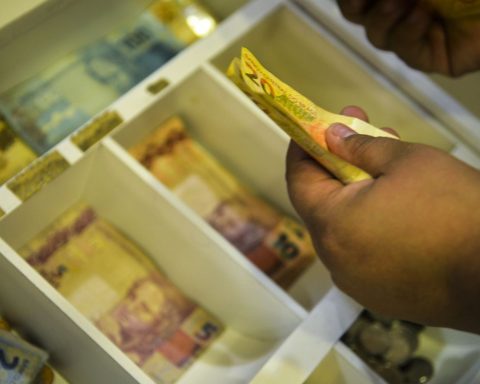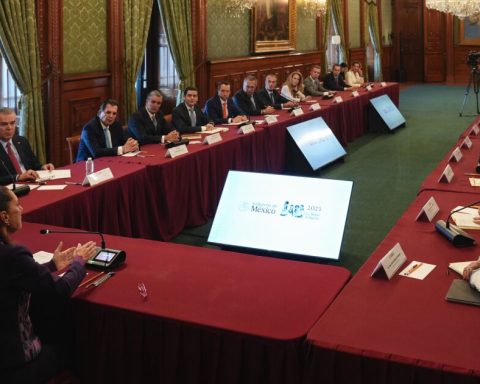More than two months after the end of the world that led to the Argentine team to win the Cupthe figurines continue to be an attractive hobby for fans who switch and buy packs to complete the album for the first or second time.
On weekends in Parque Rivadavia in the Buenos Aires neighborhood of Caballito, people of all ages continue to meet in the shadow of the “collector’s ombú” in order to exchange figurines and complete the album.
“I started to complete it after the World Cup, because before it was very difficult to get the album figurines at a reasonable price”, admitted Télam Rosario Fleitas, mother of Sofía, a 10-year-old girl who is finishing an album from the World Cup for the first time.

Regarding the exchange of figurines, Fleitas acknowledged that “it is the first time” that he visited the place on the recommendation of a co-worker.
“Collecting figurines is like an addictionwhen you start to exchange, you don’t stop anymore”, humorously pointed out Fleitas, while continuing to interact with other collectors in search of the “golden” figurines, which is what the shields of the selected ones are called.
While people talked and looked at their respective paper and electronic diaries to see which figurines they needed to complete their collection, Carlos Pérez was in charge of organizing the meeting in order to facilitate exchanges.

“I want everyone to be able to complete the album,” acknowledged Pérez, who was accompanying those who were approaching the park located on Rivadavia Avenue for the first time.
Despite his experience trading figurines, Pérez admitted that “there had never been such a frenzy over a World Cup album.”
While Pérez was helping a group of children from Berazategui who were visiting the park for the first time, a teenager in an Iron Maiden T-shirt threw figurines into the air, causing a small avalanche among collectors who quickly pounced on the figurines.
This strategy is known as “Dove”which is done by those collectors who were able to complete the album and who release their repeat figurines in order to randomly help the missing figurine collectors.
“You have to be very careful with ‘la paloma’, because many times what they throw are trout figurines,” Pérez warned.
The furor over the sales of figurines also had its repercussion in the different kiosks of the Argentine Republic.

Ernesto Acuna, president of the Union of Kiosqueros of the Argentine Republic (UKRA), told Télam that sales “remained very high over seven months”
“Argentines are characteristically passionate and that is often shown economically. This was reflected in the number of people who traveled to see the World Cup and found themselves in the country with the collection of figurines, paying up to $500 for a package of figurines, a price that even exceeds the international value,” said Acuña.
The kiosquero representative pondered indicated that “As Argentina progressed in the World Cup, sales increased.”
The UKRA representative remarked that the end-of-year festivities contributed to sustaining sales.
For their part, from Panini, the company in charge of the production and official distribution of the figurines, they told Télam “We are very satisfied with the results achieved. Although we had difficulties and many challenges due to the great initial demand, we have managed to sustain deliveries to meet the main objective; that collectors who so wish can complete their album”.

In this sense, the companies based in Italy recognized that the sales levels were “well above” compared to those sold during the 2018 World Cup in Russia.
In mid-August, UKRA had a conflict with Panini over the distribution of these products, for which the National Secretary of Commerce intervened in order to resolve the problem.
Acuña pointed out that “after that meeting an agreement was reached and the figurines could be delivered to the respective businesses”, although he acknowledged that the distribution company had problems in the production of figurines “because it was not enough to supply the demand that was in that moment”.
Both the representative of the kiosks and Panini recognized that the main sources of sales were concentrated in the City of Buenos Aires and in the first cordon of the Buenos Aires suburbs.
Acuña, who organizes gatherings to exchange figurines near her kiosk in the Buenos Aires neighborhood of Villa Urquiza, emphasized that the “people are very fans of the albums” and that he admits that “there are people who completed the album up to six times, just exchanging figurines”

The UKRA representative considered that this collection is very special for Argentines because “It is the champion Argentina’s album and that motivates many to complete it.”
In this sense, from Panini they indicated that sales are expected to “continue to stay that way until April or May.”
Gian and Valentín are two boys from the municipality of Berazategui, in the southern area of the Buenos Aires suburbs, who for the first time went to exchange figurines in the Rivadavia park.
Valentin, 19, is a law student and began completing the album in September, though he admitted it didn’t come “due to lack of time.”
“I went through several kiosks in the municipality and the truth was very difficult to obtain. In addition, where they sold them to you they were offered at a very expensive price,” Valentín pointed out.
For his part, Gian is 18 years old and is a graphic design student who was looking to complete the album “for the second time.”
“I was able to complete the album in October thanks to some acquaintances who exchanged figurines, although the victory of the selected team motivated me to start the collection again”acknowledged Gian, who pointed out that the most difficult figurines were the shields.
The shields are a valued figure among collectors, who even pay $150 individually.
